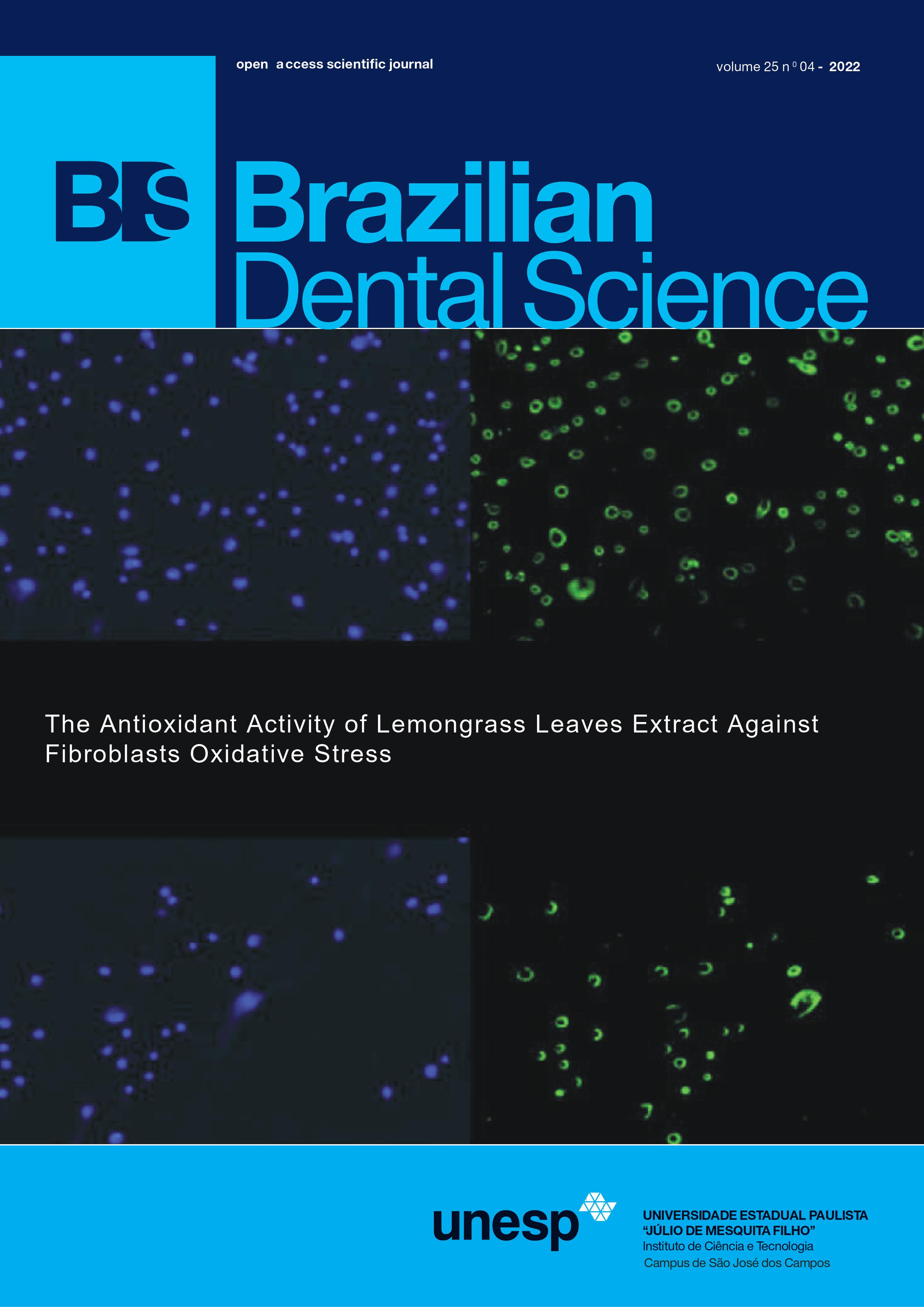Reference standard thickness for bone plates of upper teeth: an ultra-high-resolution study using tomographic mapping
DOI:
https://doi.org/10.4322/bds.2022.e3608Abstract
Objective: it is important to know the thicknesses of the alveolar bone plates (ABPs) based on the current literature
for the planning and success of orthodontic treatment. However, studies have scientific limitations regarding ABPs
as the image resolution is not adequate and is restricted to a few teeth or buccal face only. This study was aimed
at reporting a reference standard for bone plates of upper teeth, in which 15 patients (mean age of 21.79 years)
with balanced occlusion and a harmonious facial profile were evaluated using cone-beam computed tomography
at a voxel size of 0.1 mm. Material and Methods: bone tissues of the cervical, middle, and apical thirds of the
root (buccal and palatal), the distance between cement-enamel junction (CEJ) and alveolar bone crest (ABC),
and inclination of the teeth to the palatal plane were evaluated. Paired t-test, Spearman’s correlation tests, and
linear regression tests were used (P < 0.05). Results: the buccal distance between the CEJ and ABC was greater
than the palatal one in all pairs of teeth. Most of the bone tissues had a thickness <- 1 mm in the buccal face,
whereas in the cervical-apical direction, the thickness was -> 2 mm. There is no equivalence between genders
in the sample. Conclusion: the reduced buccal bone architecture around the first premolars was indicative of
local gingival recessions, and the lack of gender uniformity was suggestive of individual evaluation. References
of normal bone tissue determining the orthodontic limits were provided to assist in the treatment planning.
KEYWORDS
Bone tissue; Cone-beam computed tomography; Alveolar process; Orthodontics; Diagnosis.
Downloads
Downloads
Published
How to Cite
Issue
Section
License
Brazilian Dental Science uses the Creative Commons (CC-BY 4.0) license, thus preserving the integrity of articles in an open access environment. The journal allows the author to retain publishing rights without restrictions.
=================




























